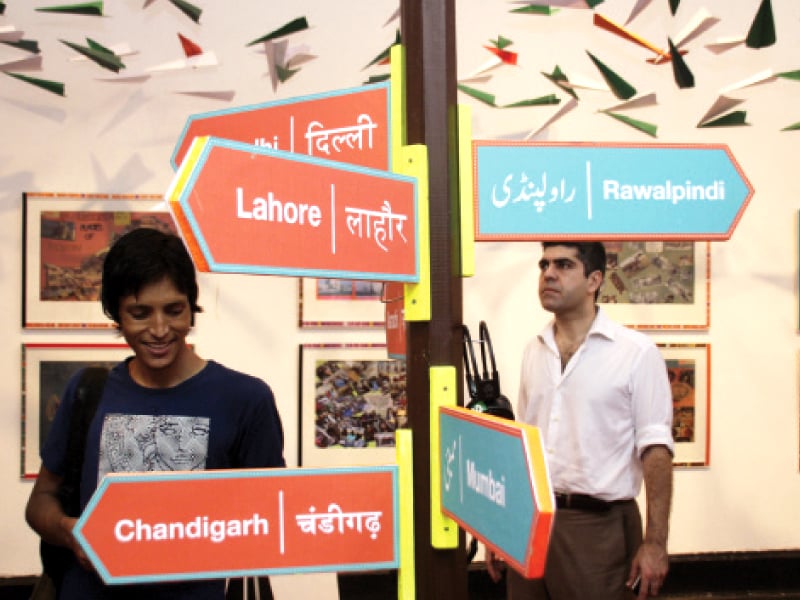
While the border tensions between India and Pakistan persist, children from the two countries are playing their part in trying to ease decades of animosity and mistrust.
Letters and pictures exchanged by schoolchildren from India and Pakistan were on display at an exhibition at the Zahoorul Ikhlaq Gallery of the National College of Arts on Tuesday that marked the culmination of a 14-month exchange project.
Some 3,500 schoolchildren from 17 schools in Karachi, Lahore, Rawalpindi, Delhi, Chandigarh and Mumbai participated in the Exchange for Change: Pakistan-India 2012-2013 project, which is a collaboration between the Citizens Archive of Pakistan (CAP) and Routes2Roots, an Indian non-profit organisation.
Over the 14-month project, the children aged 10-14 from diverse socio-economic backgrounds exchanged written, visual and oral histories of their families. “There are three series to this project,” said Fareeha Rashid, assistant manager of Exchange for Change.
“First is the ‘Dear Friend’ letter series that connects two students together. After that is the photograph series whereby children send each other postcards and collages of their culture and things they like. Then there is an audio series where they interview their grandparents and see what life was like back before and around the time of Partition.”
Some children discovered that their grandparents had lived in the same neighbourhood before India was divided in 1947. “This has helped these children form stronger ties at a very young age,” Rashid said.
Exchange for Change was first launched in September 2010, with 2,400 children from 10 schools in Karachi, Lahore, Delhi and Mumbai participating.
The 2012-13 project kicked off last September with the ‘Letters to the Past’ series. The students wrote letters to each other about their values, hobbies and interests. A special emphasis was laid upon discussing historical and cultural facts.
Between December 2012 and February 2013, the students created and sent each other postcards, greeting cards and picture collages based on four themes: school life, food, festivals and marriages, and historical monuments. This enabled them to learn about each other’s history, culture and lifestyle.
The ‘Oral History’ series was conducted between February and April 2013. Students interviewed their grandparents, collecting historical narratives about various cities across Pakistan and India and the early years of the two countries as independent nations.
Tina Vachani, the founder of Routes2Roots, said that the project heralded a brighter future for the two countries by helping young people understand each other. “It is a great pleasure to see the growing understanding between the students and change in perceptions and biases,” she said.
Indian actor Juhi Chawala is a strong patron of the programme.
The schoolchildren are to go on cross-border visits over the next couple of months to meet their pen pals in person. “It is spectacular because once they are together, there is no sense of a boundary between the children,” said Swaleha Alam Shahzada, executive director of CAP. “They talk about their love for gulab jammuns and Shah Rukh Khan.”
“Both governments have been very supportive with the governors and the chief ministers wanting to meet with the children on the person exchange,” continues Shahzada. “We’ve gotten non reporting visas, transportation... honestly, what it boils down to is that when parents fight, children should not be involved.”
The exhibit will continue till September 8.
Published in The Express Tribune, September 4th, 2013.

1722421515-0/BeFunky-collage-(19)1722421515-0-165x106.webp)



1732103737-0/Copy-of-Untitled-(55)1732103737-0-270x192.webp)


1726722687-0/Express-Tribune-Web-(9)1726722687-0-270x192.webp)
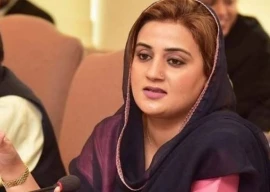

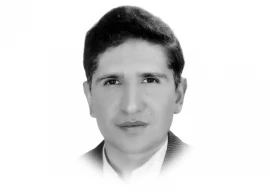

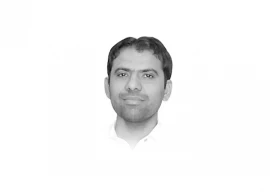

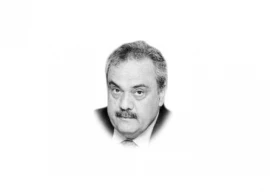

COMMENTS
Comments are moderated and generally will be posted if they are on-topic and not abusive.
For more information, please see our Comments FAQ